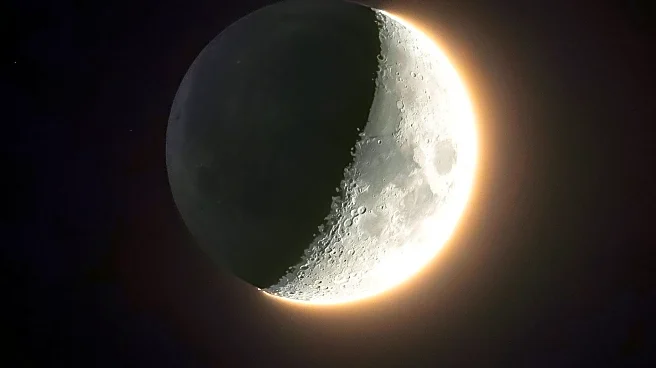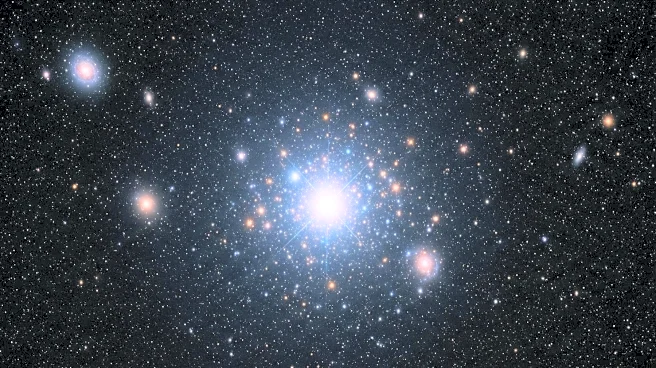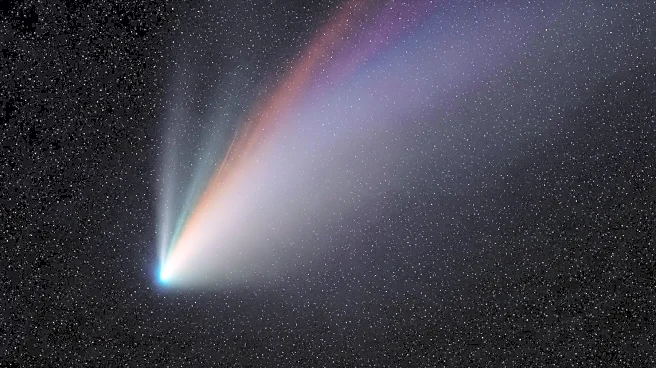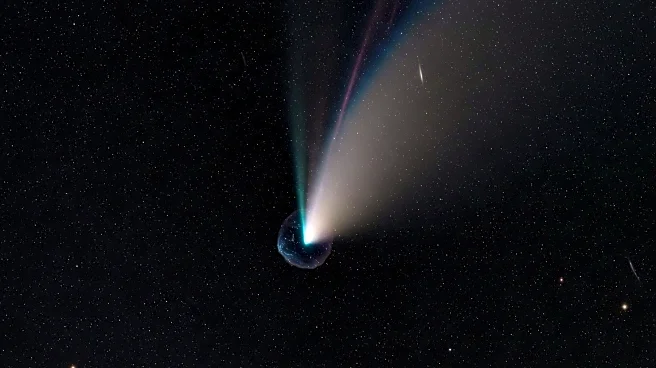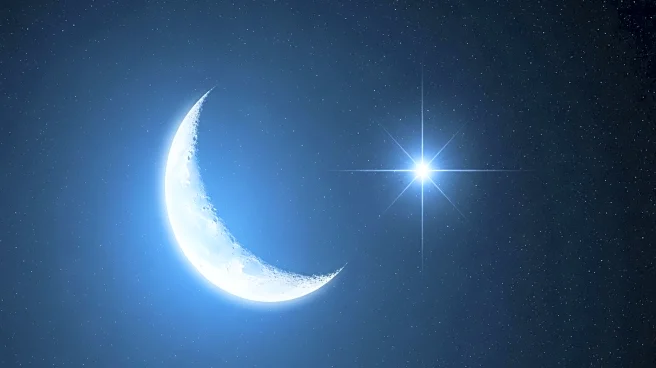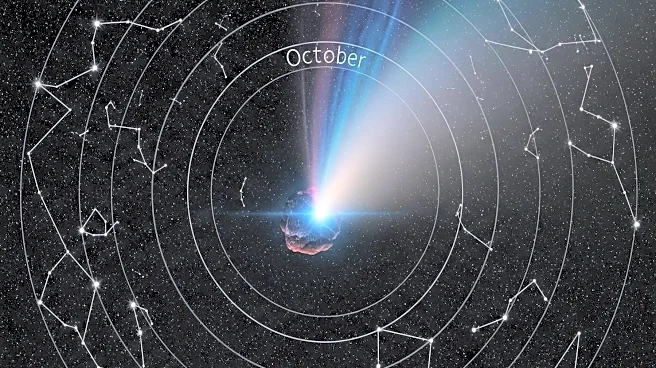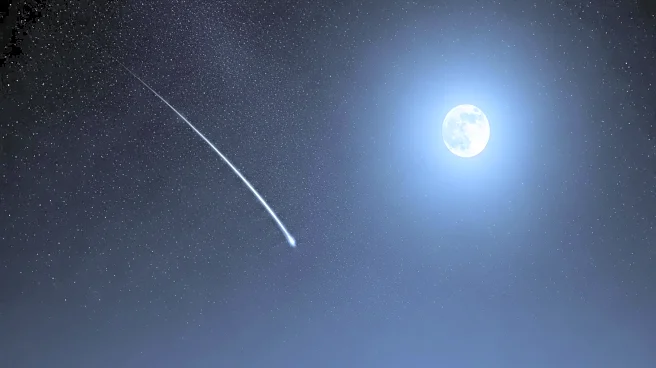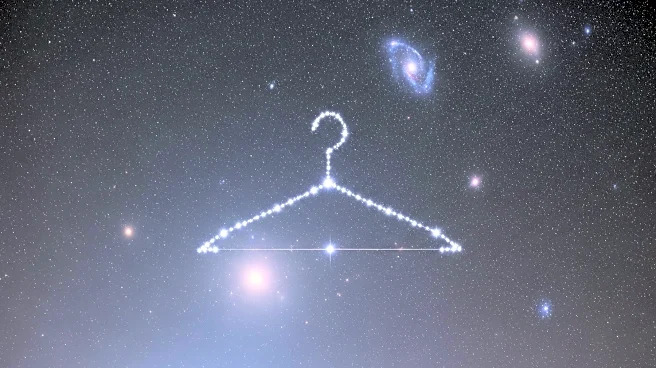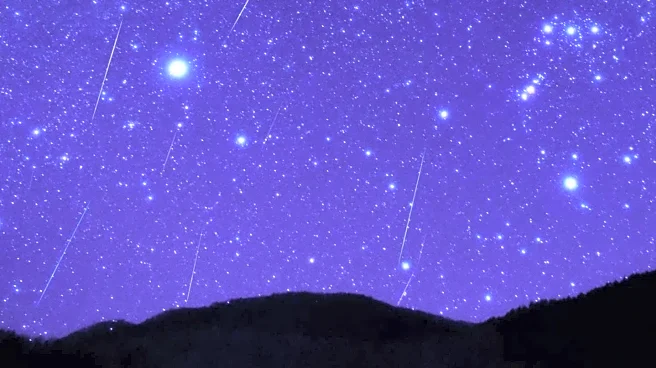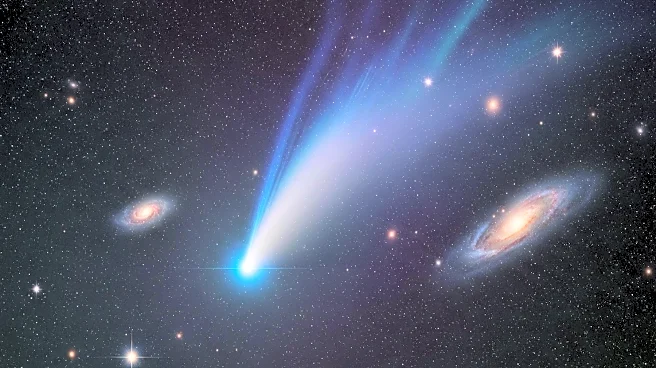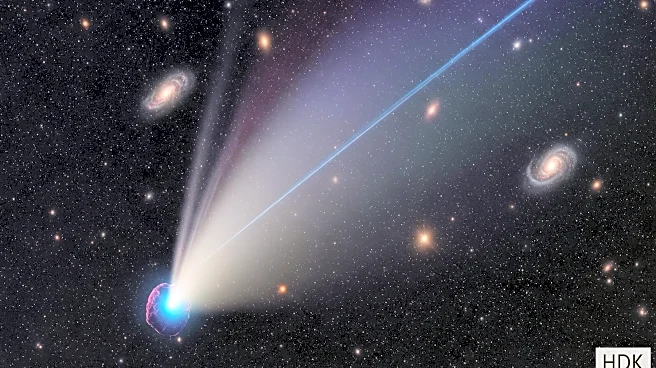What is the story about?
What's Happening?
On September 27, stargazers will have the opportunity to witness a celestial event where the crescent moon will shine close to the bright star Antares at sunset. This event will be visible 15 degrees above the southwestern horizon. Antares, a red supergiant star located approximately 604 light-years from Earth, will appear less than 3 degrees to the right of the moon. The star is nearing the end of its life and is expected to eventually explode in a supernova. Observers in New York will see the moon set shortly before 9:30 p.m., with Antares shining brightly nearby. However, only a narrow slice of Earth, including parts of Antarctica, will witness the moon pass directly in front of Antares.
Why It's Important?
This celestial event offers a unique opportunity for astronomy enthusiasts and the general public to observe a rare conjunction of the moon and a prominent star. Such events can spark interest in astronomy and provide educational opportunities about the life cycle of stars. The visibility of Antares, a red supergiant nearing the end of its life, highlights the dynamic and ever-changing nature of the universe. For those with access to telescopes or binoculars, this event provides a chance to explore the lunar surface and the surrounding stars, fostering a deeper appreciation for the night sky.
What's Next?
Following this event, astronomy enthusiasts can look forward to more celestial occurrences as the year progresses. The visibility of such events depends on weather conditions and light pollution levels. Organizations and societies dedicated to astronomy may organize viewing parties or educational sessions to engage the public further. As technology advances, more people may have access to tools that enhance their stargazing experiences, such as high-quality binoculars and telescopes.
AI Generated Content
Do you find this article useful?
